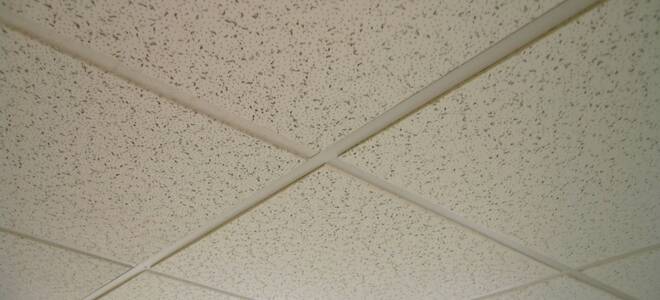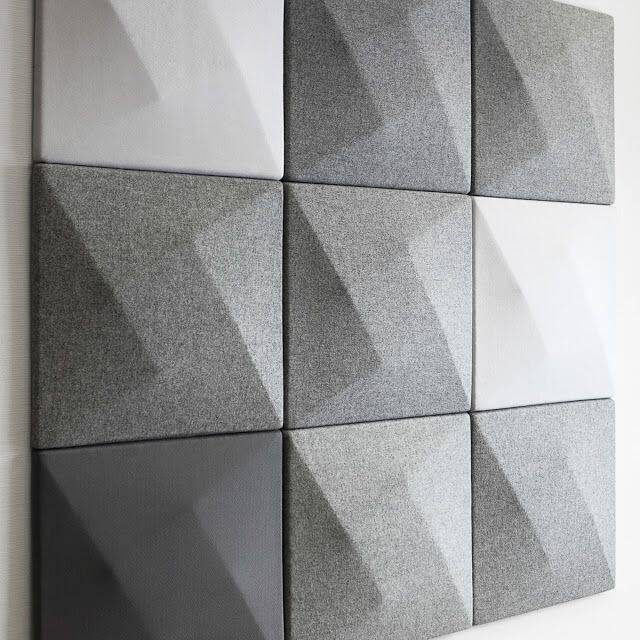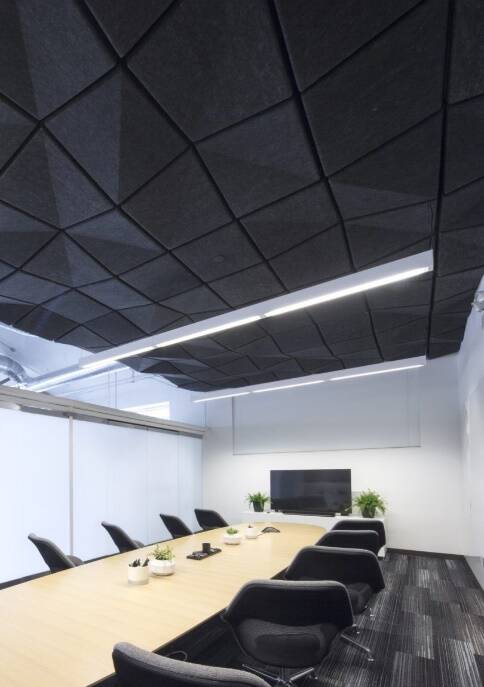How to Fix Acoustic Ceiling Tiles
What is an acoustic ceiling tile?
Generally, acoustic ceilings refer to drop ceilings with 2’x2’ or 2’x4’ tiles. If you’re familiar with the ceiling grids of office spaces and schools, you’re familiar with acoustic ceiling tiles.
In the simplest terms possible, an acoustic ceiling is a ceiling that has acoustic properties either to insulate or to absorb sound. Let us say, for example, you want a ceiling that would stop noise from being transmitted from room A to a higher room B, then you should get a soundproof acoustic ceiling. These ceilings are normally made of heavy material that is structurally disconnected from the building through the use of rubber dampers.
To get the best noise-canceling effect, some changes also need to be made on the walls of the room and sometimes even on the ground.
However, if what we want is to have pleasant acoustic comfort inside our premises, without echoes or annoying sounds, then we will need an absorbent acoustic ceiling.
A removable sound-absorbing ceiling or acoustic removable ceiling is normally formed by a lacquered profile in the color you want (usually white or black) and removable plates based on absorbent fibers. So that when sounds hit them, it is trapped so to speak.
There are ceilings based on plaster, wood or metal that have perforations to let the sound pass. Above this ceiling, a blanket of sound-absorbing material is placed so that once the sound crosses the ceiling through the perforations, it is trapped by that material.
It is useless to place any sound-absorbing material on a ceiling that is based on a completely smooth and perforated plasterboard because when the sound hits the smooth plaster plates, they will reflect it again against the floor.
Who sells it?
So many companies manufacture and sell acoustic ceiling tiles. You can visit the company websites or check out the stock available on Amazon.
Brands?
The top brands that manufacture and sell acoustic tiles include but are not limited to; Armstrong World Industries, Rockfon Medical Standard Acoustical Ceiling Tiles, Sound Silencer Acoustical Ceiling & Wall Tiles, Nova Ceiling LLC and so on.
How do you get samples?
To get samples, contact the company you want to buy from directly.
How do you repair/replace acoustic ceiling tiles?

The best way to repair acoustic roof tiles that have fallen or broken is to replace them. Check the tiles from time to time to make sure they are placed correctly and that they have not been damaged. In order to repair the tiles, the damaged tiles need to be removed and replaced with one that fits its place.
What you would need to repair or replace acoustic ceiling tiles are:
- Acoustic replacement ceiling tile
- Stairs
- Lantern
- Utility knife
Here are the steps to be followed in order to replace an acoustic ceiling tile:
Step 1 – Find the bad tile
A tile is termed bad if it is broken, has a hole in it, cracked or fractured. The damage could be because of many factors. In the case where the factor causing the damage is water, you might need to do more than just replace the tile. You would need to fix the water issue first (Your whole roof might need a change in this case).
In the case where the ceiling is damaged by water, (which can be easily identified due to the change in color of the tile and the odor linked with wet water), immediately look for where the leak is coming from. It could be that there is a broken or leaking pipe above the roof. Make sure the leak is sealed to avoid a more expensive repair later.
Step 2 – Take out the damaged tile
Take out the damaged tile by lifting it up and pulling it down until it is free from the rest. To remove the tile completely from the ceiling, pull it downwards. Use the utility knife to cut it away from the tile if it proving more difficult than usual.
By now, you should have replacement tiles that would be put in the place of the ones that were removed. The tiles can be found in hardware stores. In the case where the tiles are custom made, you will need to find the manufacturer to create a special mosaic as a spare.
Step 3 – Change the damaged tile
Set a new tile in the place of the damaged tile. Push the panel up and allow it to rest on the roof tracks for a textbook fitting.
What textures and colors does it come in?


Best practices?
How is the sound like in places that hold more than 5 people? Most times, when entering some places like offices, classrooms, dining rooms, restaurants and waiting rooms that hold more than 5 people at a time, there is a feeling that there would be a lot of noise inside.
This feeling of noise is an annoying feeling because most times it requires that you raise your voice in order to be able to talk to the person sitting or standing next to you. We hear more from other people talking near us than who is talking to us.
A very clear example of where this happens that you can relate to is the school canteen. The school canteen is known to be very noisy because there we have more than 50 children all screaming and talking at the same time. The sound generated there tends to multiply because of the presence of reflective surfaces and the absence of noise-absorbing elements.
This is due to the high reverberation of the premises. Normally a high reverberation occurs when the materials are seen that form the premises are reflective and therefore are not capable of absorbing sound. (A plaster ceiling, a marble floor, lucid walls of plaster, glass or mirrors, etc.)
To reduce the reverberation of a room and therefore gain acoustic comfort, sound-absorbing materials must be introduced (porous materials that can absorb sound and do not reflect it or reflect it as little as possible).
These absorbing materials can be used on the walls, on the floor or on the ceiling.
For structures that are would customarily hold many people like bars and hospitals, it is advised that the absorbent materials be placed on the roof. The ceilings can be both fixed and removable, and for it to be absorbent, the ceilings must contain porous materials.